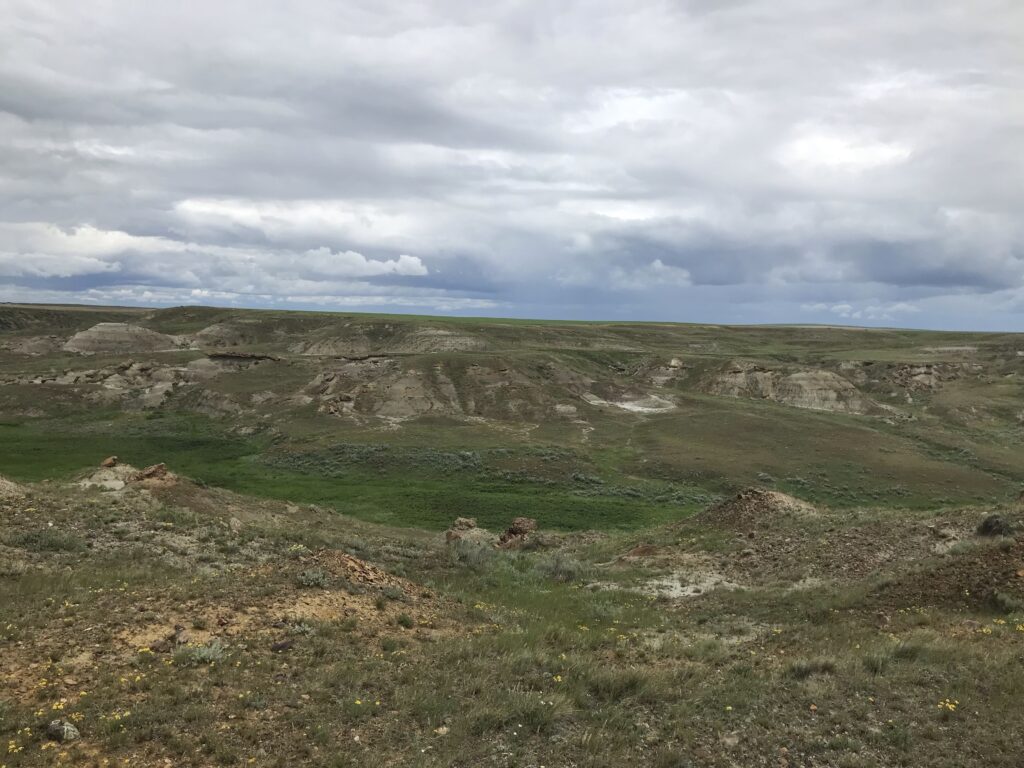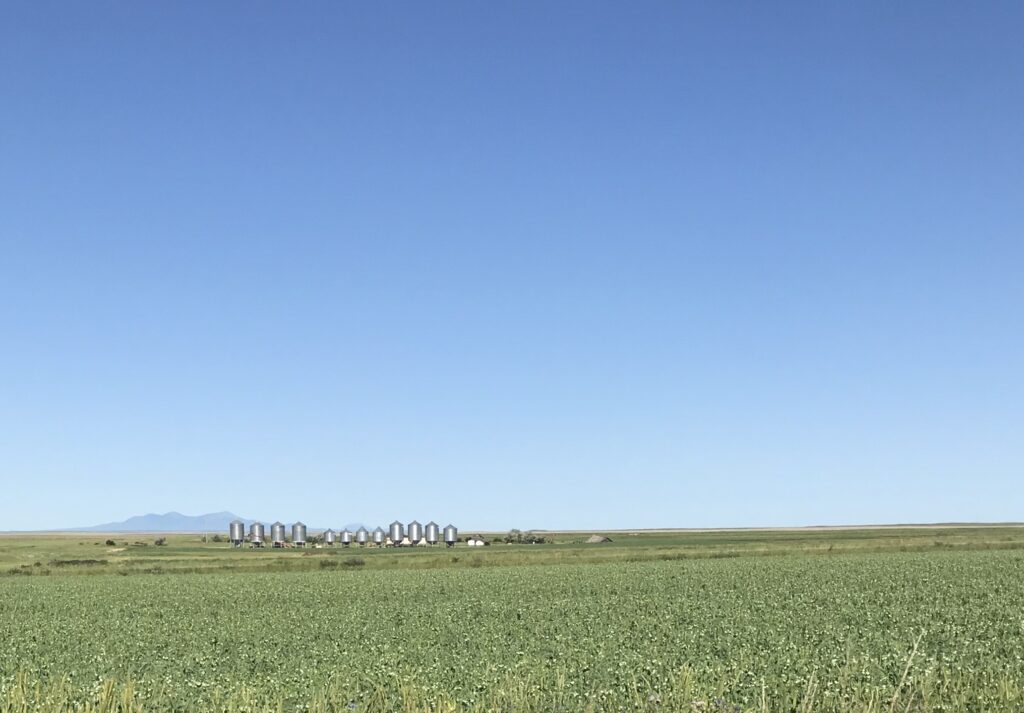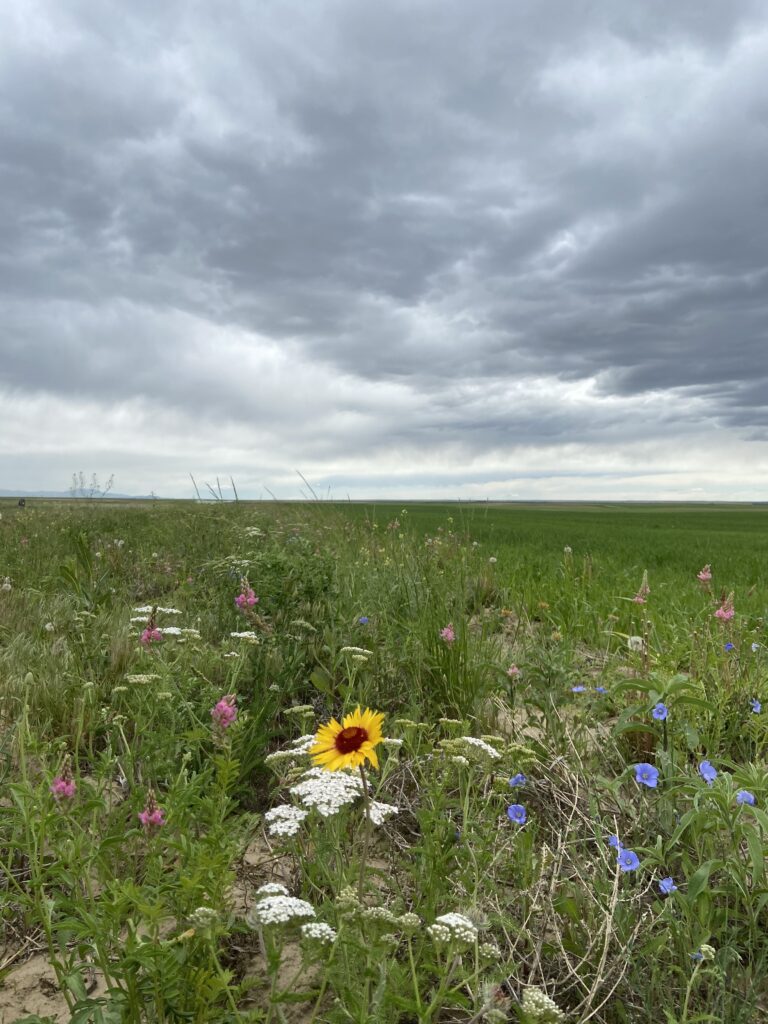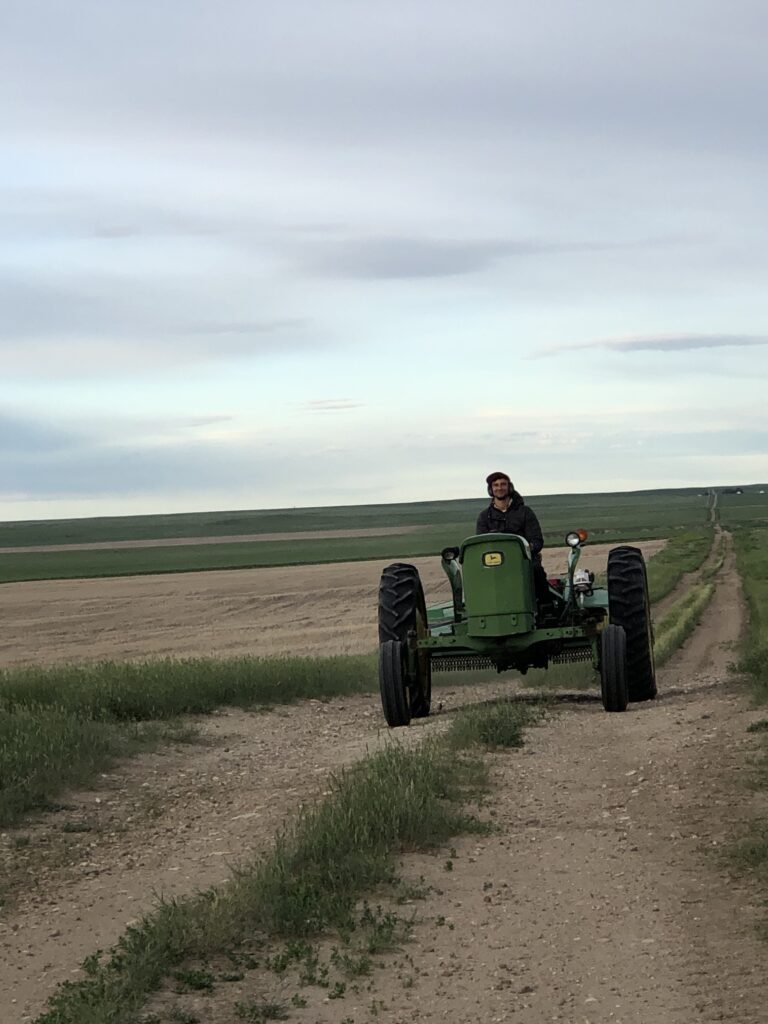I arrived at the farm on a Saturday three weeks ago. I drove for three days from Philadelphia to Hill County, Montana. The land first became flat and mostly treeless in eastern North Dakota, where I spent my second night on the road. The third and final day of driving was uninterrupted flatness. Though while driving the land changed only subtly, I arrived that Saturday evening in a very different landscape than the one I left that morning. In eastern North Dakota transient, seasonal pools, filled with water birds bordered the road. The crops were a lush, youthful green. Here, Hill County’s landscape has a dry harshness. Bordering Canada, equidistant between North Dakota and Idaho, its infrequent, dribbling rivers carve large coulees, exposing dry, weak, sandy soil. The rangeland looks tough, as though the small herds of cows dotting the vast landscape might struggle to digest the vegetation.

Coulees interrupt the flatness here and there. These crater-like valleys are just plain neat.

Flat is the wrong, but easiest word to use. The land isn’t flat, only its hills all seem to reach the same, low height. The effect is that the land looks thin, mountains 100 miles away look close, and the sky looks big.
It is in this harsh land that Doug Crabtree and Anna Jones-Crabtree set roots in 2009 when they created Vilicus Farms. With a mix of agronomy, ecology, and engineering education and two solid jobs and careers, at age 40 Doug and Anna were not your typical beginning farmers. And now, with 9,600 acres of dry land (not irrigated) organic grains and legumes, and a complex agronomic system designed to promote ecological diversity, Vilicus Farms is not your typical farm. It is in a rare class of intensely ecologically-centered farms at scale. When I’ve asked Doug and Anna who else is growing grains organically at their scale and with their complexity, they struggle to name anyone.
They came to north-central Montana because the land was cheap—for a good reason. For the last three years, the region has experienced intense, crop-killing drought. The region desperately relies on its 11.5” average annual precipitation. (Compare that to the roughly 30” average annual precipitation for the entire U.S., or the cutoff of 10” or less annual precipitation which formally defines a desert.) When that rain doesn’t come, or comes at the wrong time, crops die, farmers’ time and up-front expenditures go unrewarded, and the balance sheets dip into, or further into, the red.
Regardless of the recent droughts, Doug and Anna continue to reserve nearly 30% of their land as “unfarmed.” They use this land to give the natural ecology its needed space, create pollinator habitat, and create buffer strips to prevent erosion. The idea to increase their profits by reducing that reserved land I believe literally has not ever crossed their mind.

Each crop is planted in 240-foot-wide strips. Between each crop Vilicus seeds and maintains 20-foot-wide pollinator strips. They offer habitat for bees, insects, birds, and animals. They also act as windbreaks to help prevent erosion, a huge issue throughout the dry and windy Northern Great Plains. Pollinator strips, in combination with field borders and sections of preserved, native rangeland account for roughly 30% of Vilicus’ land.
That is not to say that costs and profit are not top of mind. I have sat in their monthly budget meeting, watched over Doug’s shoulder as he feeds his addiction of hunting online tractor auctions for good deals, and I am working on a paper with Anna on how the food supply chain can create better contract mechanisms to financially support regenerative and organic farmers. Yet, what gets them up in the morning is their land, the people living and working on it, and the larger food system that they desperately want to change. Money is simply a means to an end.
They need money to shift the U.S. farm paradigm from the present state, to an ecologically sensible one. They need to be more profitable than their chemical spraying neighbors, or else who will switch to organic farming?
When you drive to Vilicus’ disparate land parcels you pass their neighbors’ fields, on which you see an odd sight. Square mile fields alternate from lush, perfect wheat fields to fields of completely barren soil except for rows of dried stalks, all uniformly cut to a few inches. The lack of life on these barren fields is unnerving—it doesn’t appear natural. In contrast, even the untended road shoulders, though dry, have grasses, alfalfas, and short flowering plants.
Indeed, this moon-surface-like absence of life on their neighbors’ fields is not natural. It is the invention of Bayer (which now owns Monsanto). These fields are in a state of chemical fallow (more often shortened to “chem fallow”). In order to save water for next year, most of Vilicus’ neighbors routinely spray the herbicide glyphosate (AKA Roundup) throughout the year to prevent any plants from growing and soaking up moisture. Therefore, when next year’s wheat is planted, more of the previous year’s precipitation will remain in the ground for the wheat to drink.
Chemicals are used to this end instead of tilling in the name of soil conservation. Because tilling disturbs and loosens the soil, in erosion prone areas people are rightly concerned about tillage. Thus, for many people and organizations, chem fallow is considered a conservation and regenerative practice. Yet when I see Vilicus’ conservation strips, or even a roadside, teaming with plant and insect and bird and animal life, I can’t help but feel that to douse chemicals onto the land and deprive it of life is a terrible sin.
Vilicus, which as a large-scale organic operation has no choice but to till, prevents erosion and maintains water through a refined mixture of tactics. These tactics include: minimal tillage, shallow tillage, long-term crop rotations, planting in narrow strips, maintaining field borders and pollinator strips, and simply not planting in sections with the worst and loosest soil. I am reminded of Rachel Carson’s Silent Spring, in which she presents two possible management options for dealing with invasive species attacking American forests: spray chemicals wholesale throughout the forest to no avail and certain environmental destruction, or a nuanced approach of minimal but precise intervention through ecosystem understanding… It’s a shame you can’t lobby for and sell nuance in a bottle.

Though chem fallow is practiced on roughly a third of America’s cropland, until arriving here I had only read about it. I did not support the practice in theory, but seeing it up close is a very different experience. And one that I am fortunate to have – I am fortunate to be haunted by it.
I have never farmed, so much as gardened. Raised beds are my scale. I came here, to big sky country, to work on a 9,600-acre organic farm because raised beds, while awesome and important in their own right, are not going to affect the U.S. farming system or its landscape.
Working out here, with the ever-present sun, persistent wind, and gigantic views, I am, in a word, elated. This particular type of elation is foreign to me. The feeling is some mix of extreme satisfaction, a current of energy, and a strange, profound giddiness from being outside, working with my hands all day, and seeing the product of my labor.

Two other necessary ingredients are here to produce this type of elation. First, the group of people at Vilicus. They are dedicated, thoughtful, and passionate people. Second, Vilicus’ land ethic and mission. It is the blood that runs through the team, providing energy and clarity. The shared love of the land, care for the plants, animals, and the honoring of an ecosystem’s inherent, essential complexity and diversity is perhaps the root of my elation.
Yet each day is laborious, monotonous, and often feels removed from the beauty of the land. There is an irony about the work: I sit in a loud, diesel chugging tractor all day, performing repetitive tasks on the land, back and forth, over and over, to promote a system that enhances diversity and the opportunity for life on the landscape. I think this irony would kill my elation over time. I have only been here three weeks. And yet… as Doug and Anna work through their 12th growing season, there is a palpable, wild energy that pulses through them.
STUDENT RESEARCHER

Tim Ibbotson-Sindelar, Western Resources Fellow |Tim Ibbotson-Sindelar is a joint Master of Environmental Management and MBA candidate at the Yale School of the Environment and the Yale School of Management. He is studying U.S. food and agricultural systems with the aim to shift the present paradigm to support the health of ecosystems and humans, and create financial incentives and stability for farmers to improve their land and local ecosystems. He holds a BA in economics from Haverford College. He previously worked as a financial litigation consultant, and more recently as a produce procurement analyst at an online grocer. See what Tim has been up to. | Blog
